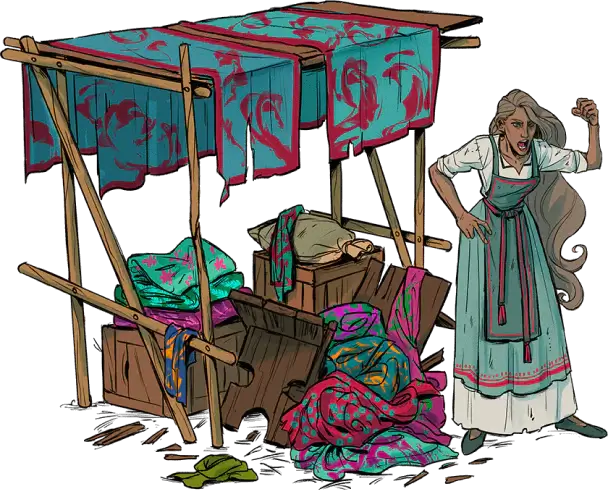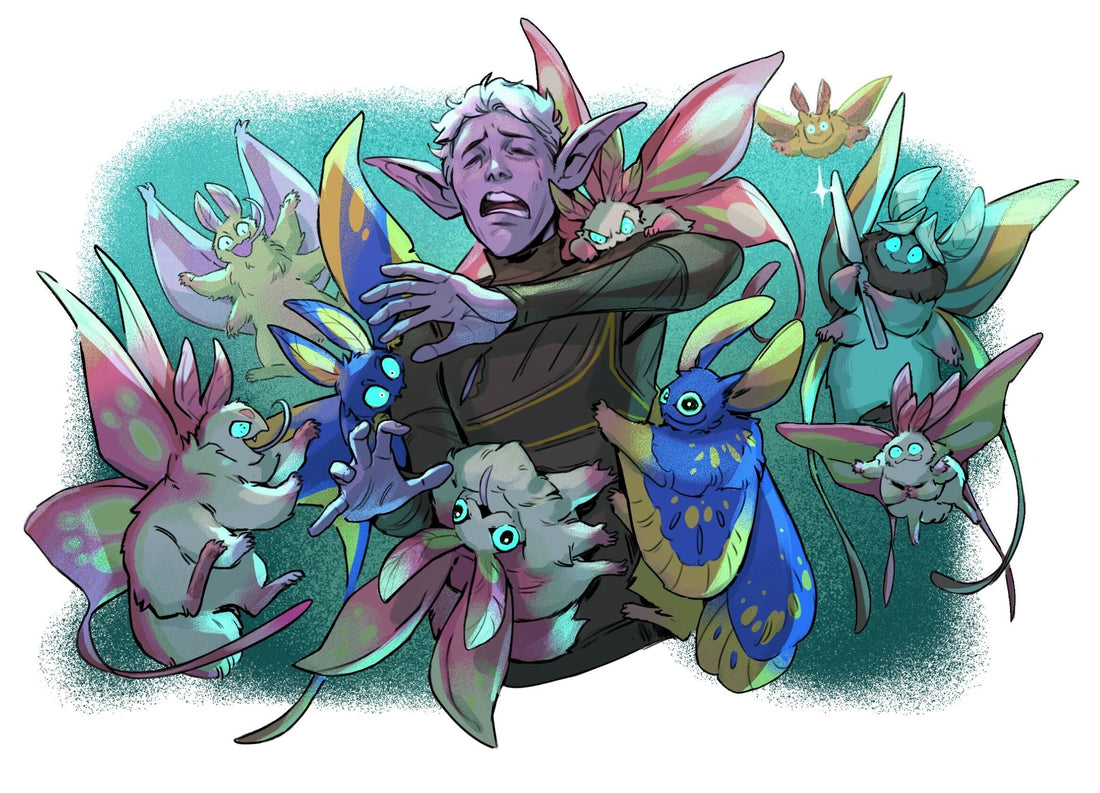Kinfire Council Design Diary #3: Ia! Ia! Altan Ftaghn!
As we’ve prepared for the kickstarter, I’ve done a lot of firming up the design and we’ve done a ton more playtesting. So, let’s now talk about the third main aspect I focused on in the design - Threat.
Cultists
The primary threat that the players face in the game comes in the form of the Cult of Altan. Each round, 3 cultists are drawn from the bag and are placed on the board in the space corresponding to their numbers, blocking the spaces they’re in from being used. This helps to create a dynamic board that changes every round, keeping the players on their toes. Additionally, players may arrest a cultist by playing a worker adjacent to it and forgoing the worker’s action. Arrested cultists can be traded in for a bounty at various spaces on the board or spent to question them to aid in thwarting a threat card.
Threat Cards
Threat card? Well, yes. These represent the greater schemes that the Cult is working on, and each time a cultist is drawn, it advances a threat on the threat board in the space that corresponds to the cultist’s number (1-6, 7-12, or 13-18). When a threat is advanced, if there’s no threat card in that space, one is drawn and placed there. If there’s already a threat card there, a trouble token is placed on the threat card instead. Each threat has a value in its upper left that represents how many trouble tokens are needed to trigger its effect. Once triggered, a threat card carries out the effect listed on the card, and is then discarded (usually).
A lot of the time, this involves adding new City Needs to the City Needs track or dealing damage to the current lighthouse. Damage dealt to the lighthouse is marked with trouble tokens and reduces the value of the lighthouse at the end of the round before players receive the VPs they’re owed for their contributions to it. Other times though, a threat may target a player’s interests more specifically, causing the other players to say something along the lines of “That looks like a ‘you’ problem.”
Threat cards can be thwarted by sending your Seeker out of the city to the threat’s location and paying its thwart cost, or hiring a Seeker at the Seeker’s Guild to do so (which still requires you to pay the thwart cost). You then receive some VPs for thwarting the threat and take the threat card. Much like an arrested cultist, you can trade these threats in for a bounty at various spaces on the board, some of which are very powerful. Judicious thwarting and spending of threats can be instrumental to a player’s path to victory.
Cult Leaders
In addition to the regular cultists, there are 2 cult leaders in the bag as well. When drawn, these leaders don’t go on the board, but are discarded to a special area after being resolved. They advance all three threat zones (sort of like a combined #6, #12, and #18 cultist) when resolved, and if both leaders have been discarded, all discarded cultists (including the leaders) as well as any arrested cultists are immediately returned to the bag. In other words, don’t hang on to your cultists too long or they might escape.
Cult Wins and Joining the Cult
So far, this seems inconvenient, but not all that bad, I’m sure. Well, there’s another wrinkle to the Cult - they can win the game. The Cult has its own scoring marker and collects VPs for various things that occur during the game. If they have the most VPs at the end of the game, then the Cult wins, which can be very bad or very good for the players, depending.
During the game, the players can cozy up to the Cult by acquiring cult influence. The player with the most cult influence is the Conspirator, and if the Cult wins the game, then the Conspirator wins instead. However, if nobody is the Conspirator, then the Cult wins and all of the players actually do lose.
Well, that’s ridiculous, right? If the Cult’s winning, then why on earth wouldn’t someone become the Conspirator, just in case? Well, that’s because the players don’t exactly know what the Cult’s score is until the end of the game. At the start of the game, 3 threat cards are placed in a pile without looking at them - these are the Cult’s hidden threats. At the end of the game, they’re revealed and the Cult scores the VPs for them. Additionally, extra hidden threats may sometimes be added during the game, raising the chance of a surprise upset. This really adds some nice tension to the end of the game and allows a player who has fallen behind to have another shot at winning if they throw in with the Cult.
Overall, the Cult serves to shake things up during the game, and also forms the foundation of a solo/co-op variant I’m working on for the Winds of Change expansion, also available on the Kinfire Council kickstarter, which is live until May 27th. I’ve got one more designer diary in me for this one, where I’ll talk about how the game has evolved and changed over its development. See you then!




:strip_icc()/pic8196955.png)
:strip_icc()/pic8196958.png)
:strip_icc()/pic8196962.png)
:strip_icc()/pic8196964.png)